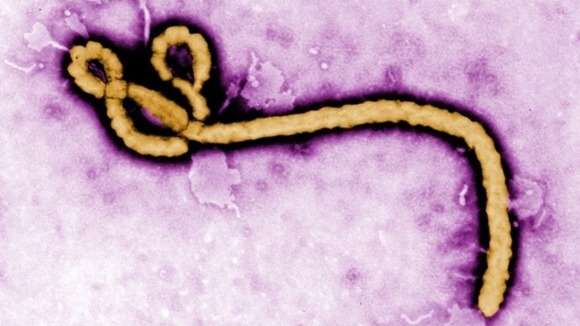The origin of the deadly Ebola virus has been traced to Africa. The scientist who discovered the Ebola virus from a blood sample of a dying Catholic nun way back in 1976 in Congo warns that the latest outbreak is caused by the deadliest strain of the virus — 9 out of 10 infected will die from it.
There are four types of Ebola virus that infect humans. The most deadly is this strain from the current epidemic, known as the 'Zaire strain'. It is part of a small group of viruses that kills infected people within a couple of weeks. It has a very high mortality, much like rabies.
The early symptoms of an Ebola infection include fever, headache, muscle aches and sore throat, according to the World Health Organization. It can be difficult to distinguish between Ebola and the symptoms of malaria, typhoid fever or cholera. Only in later stages do people with Ebola begin bleeding both internally and externally, often through the nose and ears.
The Ebola virus is not airborne, so people would have to come into contact with the bodily fluids of an infected person. These include blood, sweat, vomit, feces, urine, saliva or semen — making transmission through casual contact in a public setting unlikely.
If an Ebola outbreak is suspected, the premises should be quarantined immediately. Culling of infected animals, with close supervision of burial or incineration of carcasses, may be necessary to reduce the risk of animal-to-human transmission. Restricting or banning the movement of animals from infected farms to other areas can reduce the spread of the disease.
In the absence of effective treatment and a human vaccine, raising awareness of the risk factors for Ebola infection and the protective measures individuals can take is the only way to reduce human infection and death.
No licensed vaccine against the deadly Ebola virus is available. Several vaccines are being tested, but none are available for clinical use.
Severely ill patients require intensive supportive care. Patients are frequently dehydrated and require oral rehydration with solutions containing electrolytes or intravenous fluids.
No specific treatment is available. However, new drug therapies are being evaluated.
What is Ebola?
There are four types of Ebola virus that infect humans. The most deadly is this strain from the current epidemic, known as the 'Zaire strain'. It is part of a small group of viruses that kills infected people within a couple of weeks. It has a very high mortality, much like rabies.
Symptoms of Ebola
The early symptoms of an Ebola infection include fever, headache, muscle aches and sore throat, according to the World Health Organization. It can be difficult to distinguish between Ebola and the symptoms of malaria, typhoid fever or cholera. Only in later stages do people with Ebola begin bleeding both internally and externally, often through the nose and ears.
How does it spread?
The Ebola virus is not airborne, so people would have to come into contact with the bodily fluids of an infected person. These include blood, sweat, vomit, feces, urine, saliva or semen — making transmission through casual contact in a public setting unlikely.
Prevention
If an Ebola outbreak is suspected, the premises should be quarantined immediately. Culling of infected animals, with close supervision of burial or incineration of carcasses, may be necessary to reduce the risk of animal-to-human transmission. Restricting or banning the movement of animals from infected farms to other areas can reduce the spread of the disease.
In the absence of effective treatment and a human vaccine, raising awareness of the risk factors for Ebola infection and the protective measures individuals can take is the only way to reduce human infection and death.
Treatment
No licensed vaccine against the deadly Ebola virus is available. Several vaccines are being tested, but none are available for clinical use.
Severely ill patients require intensive supportive care. Patients are frequently dehydrated and require oral rehydration with solutions containing electrolytes or intravenous fluids.
No specific treatment is available. However, new drug therapies are being evaluated.

No comments:
Post a Comment